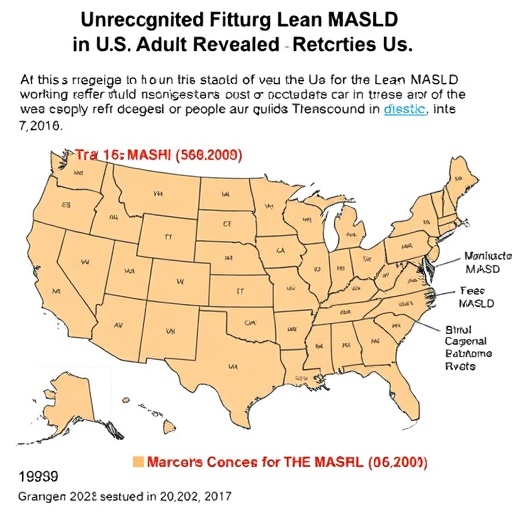Average rates 11 percent higher and growing in permissive states, shrinking in restrictive states
States with more permissive gun laws and greater gun ownership have higher rates of mass shootings, and a growing divide is emerging between states with restrictive versus permissive gun laws. According to a new study, researchers at Columbia Mailman School of Public Health found that in most years permissive states had higher mass shooting rates compared to restrictive states. The results showed that a 10 unit increase in state permissiveness was associated with a significant 11 percent higher mass shooting rate; a 10 percent higher state firearm ownership rate was associated with a 35 percent higher rate of mass shootings. The findings appear online in the British Medical Journal.
“Our analyses reveal that U.S. gun laws have become more permissive in past decades, and the divide between permissive states and those with more stringent laws seems to be on the uptick in concert with the growing tragedy of mass shootings in the U.S.,” said senior author Charles Branas, PhD, Chair and Gelman Professor in the Department of Epidemiology at Columbia’s Mailman School of Public Health. Lead author Paul Reeping, also in the Department of Epidemiology, extended this saying that, “Gun laws, or lack thereof, have real potential to influence mass shootings. Our study brings out a key disparity and sets the stage for better data collection on mass shootings and figuring out which specific gun laws could be most impactful in reducing mass shootings.”
Mass shootings were defined as events in which four or more individuals were killed by a firearm using data from the FBI’s Uniform Crime Reporting System (UCR). To date there has been little research conducted to understand factors at the state level that may influence mass shootings, and nationwide data collection on mass shootings has been limited.
The researchers used the 1998-2015 editions of “Traveler’s Guide to the Firearms Laws of the Fifty States” to obtain an annual restrictiveness-permissiveness scale of U.S. state gun laws, which gives a rating between 0 (completely restrictive) and 100 (completely permissive) for the firearm laws of all 50 states, and is designed to support gun owners in complying with the changing laws when traveling outside their own state. The report considers many factors in developing the score, including for example: carry and permit requirements, semiautomatic guns and high capacity magazines, vehicle gun possession, carrying guns where alcohol is served, and out-of-state permit recognition, among others.
According to the findings, there was an overall shift toward permissiveness in gun ownership between 1998 and 2014. Massachusetts was found to have the most restrictive gun laws and Vermont the most permissive over the study period. In particular, a growing divergence was noted in 2010, with decreasing mass shooting rates among restrictive states and increasing rates among states with more relaxed gun laws. On average, more permissive states and states with higher rates of gun ownership appeared to have more mass shootings. Gun ownership was estimated using a common state-level measure, the percent of suicides committed with a firearm.
Researchers further separated annual mass shooting rates into events that likely took place in the home (domestic) and those that occurred outside of the home (nondomestic) for each state, although these two types of mass shootings appeared to be similarly affected by gun laws and gun ownership. Domestic mass shootings included instances where a perpetrator committed the act against family members; nondomestic mass shootings covered all other types of relationships including non-family members, acquaintances, employers, friends, and neighbors. From 1998 to 2014, there were 344 mass shooting incidents, of which 76.5 percent were classified as nondomestic events while the remaining 23.5 percent were identified as domestic.
“We need better nationwide data collection on mass shootings – for instance, the lack of data from Florida highlights this, and may make the differences we found appear even less stark than they really are. More studies that test the impact of specific state gun laws are warranted given our findings, the general increase in state gun law permissiveness, and the pressing need to stem the continued and increasing tragedy of mass shootings in the U.S.,” said Reeping.
###
Co-authors include: Magdalena Cerda, New York University Langone School of Medicine; Bindu Kalesan and Sandro Galea, Boston University School of Public Health; and Douglas Wiebe, University of Pennsylvania Perelman School of Medicine.
The authors have no financial conflicts of interest.
Columbia University Mailman School of Public Health
Founded in 1922, the Columbia University Mailman School of Public Health pursues an agenda of research, education, and service to address the critical and complex public health issues affecting New Yorkers, the nation and the world. The Columbia Mailman School is the third largest recipient of NIH grants among schools of public health. Its over 450 multi-disciplinary faculty members work in more than 100 countries around the world, addressing such issues as preventing infectious and chronic diseases, environmental health, maternal and child health, health policy, climate change & health, and public health preparedness. It is a leader in public health education with over 1,300 graduate students from more than 40 nations pursuing a variety of master’s and doctoral degree programs. The Columbia Mailman School is also home to numerous world-renowned research centers, including ICAP and the Center for Infection and Immunity. For more information, please visit http://www.
Media Contact
Stephanie Berger
[email protected]




